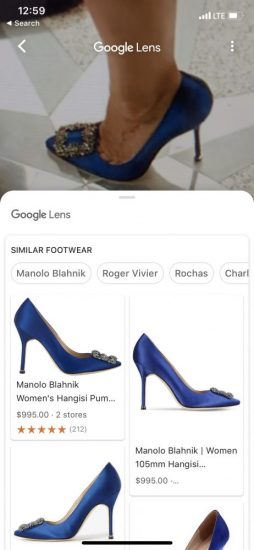When Google celebrated its 20th birthday in 2018, the tech giant took the opportunity to introduce several important updates and transitions to how it performs its most essential functions. The company announced that users could expect a fundamental shift “from text to a more visual way of finding information.”
If you’ve been keeping tabs on Google’s updates and changes, this announcement didn’t come as a surprise. Google has been working to improve and expand its image search capabilities, adding new features like visual search engine results pages (SERPs) and Google products that focus on images. Here are a few ways Google is prioritizing images.
- Algorithm Updates. Some of Google’s newest algorithm updates emphasize images in search results. Google has also updated the Google Image algorithm recently– the new updated Google Images algorithm will prioritize pages that display searchable images more prominently and higher up on the page. Google will also prioritize images that come from authoritative websites. At a January 2019 Google NYC meetup, John Mueller also said that image search will be a “bigger topic” this year.

- Thumbnail images. Over the last year, we’ve seen a dramatic rise in the number of thumbnail images featured on SERPs, especially on mobile devices. With more than 50 percent of Google searches now coming from mobile devices, the company is betting that adding a visual element will make it easier for users to find the information they need more quickly.

- Image-based searches. Imagine seeing the perfect pair of shoes in a movie or magazine page but having no way to translate that into a fruitful Google search. Searching for “blue high heels” won’t help, but what if you could just snap a photo and use the image itself? With new developments in AI, products like Google Lens may be able to help you figure out exactly where to buy the shoes (or couch, or car) of your dreams.
Google’s image-focused shift is aimed at increasing user accessibility and creating new ways to present content. Until now, search has been fundamentally text based; shifting to a more visual way of providing information opens the door to helping users who have language processing issues or other problems with reading text. The company is hoping to meet users where they are, inviting them to learn more about topics that are relevant to them. An image-focused way of finding information is one important component of forming that invitation.
For their part, content creators who want to benefit from Google’s visual initiatives will need to anchor their pages with unique, highly-relevant images. Companies that want to achieve and maintain high visibility on Google will benefit by devoting more attention to the images they use in online content.
The use (and usefulness) of images might change between businesses, so it can be useful to think about how to use images in your specific vertical. Some of those use cases might not be intuitive. Clear graphs and charts, product images, graphics, and more, can help illustrate concepts and values.
One of the best ways to appreciate this visual shift is to see it in action. Sites like Waypoint, Slate, and Bon Appetit all have very different audiences, but they are all incorporating fresh new ways to use visual features.
- Waypoint, owned by VICE, is a site devoted to gaming culture. Waypoint has some really cool examples of beautiful, brand consistent imagery, that’s also unique to the site and eye-catching to human users.
- Slate uses interesting photo editing techniques to create eye catching and unique visual experiences.
- Bon Appetit has a very specific strong food photo aesthetic that reflects well in recipe mobile SERP results.
This evolution from words to images offers exciting opportunities for businesses to create compelling web pages that utilize both images and text. Creative images that connect clearly with the text on a page will make that page more interesting, but they can also help boost search result rankings and visibility.


Thanks for this post, it is a very useful reference for keeping up to date with the latest digital marketing and social media news..
Nice and informative blog thanks for sharing such a great article.
This is great news for autistic people!